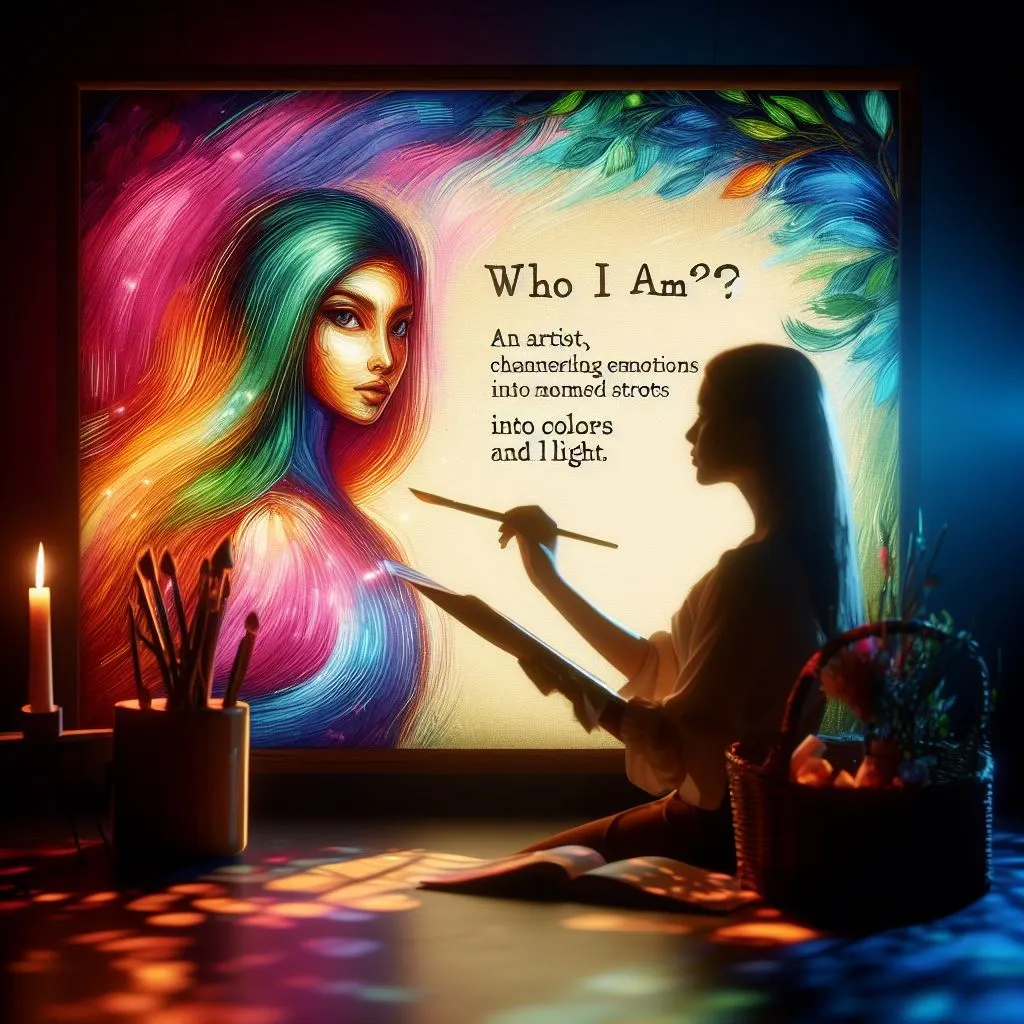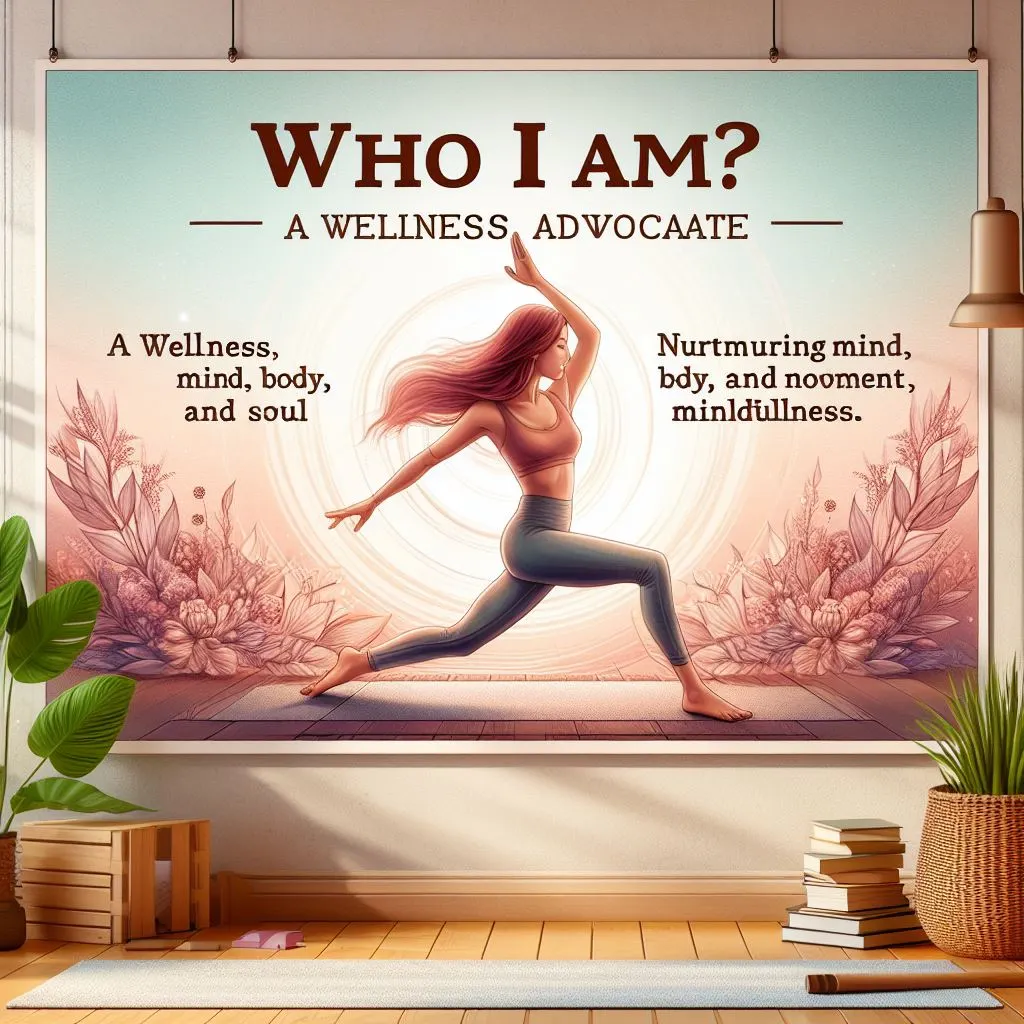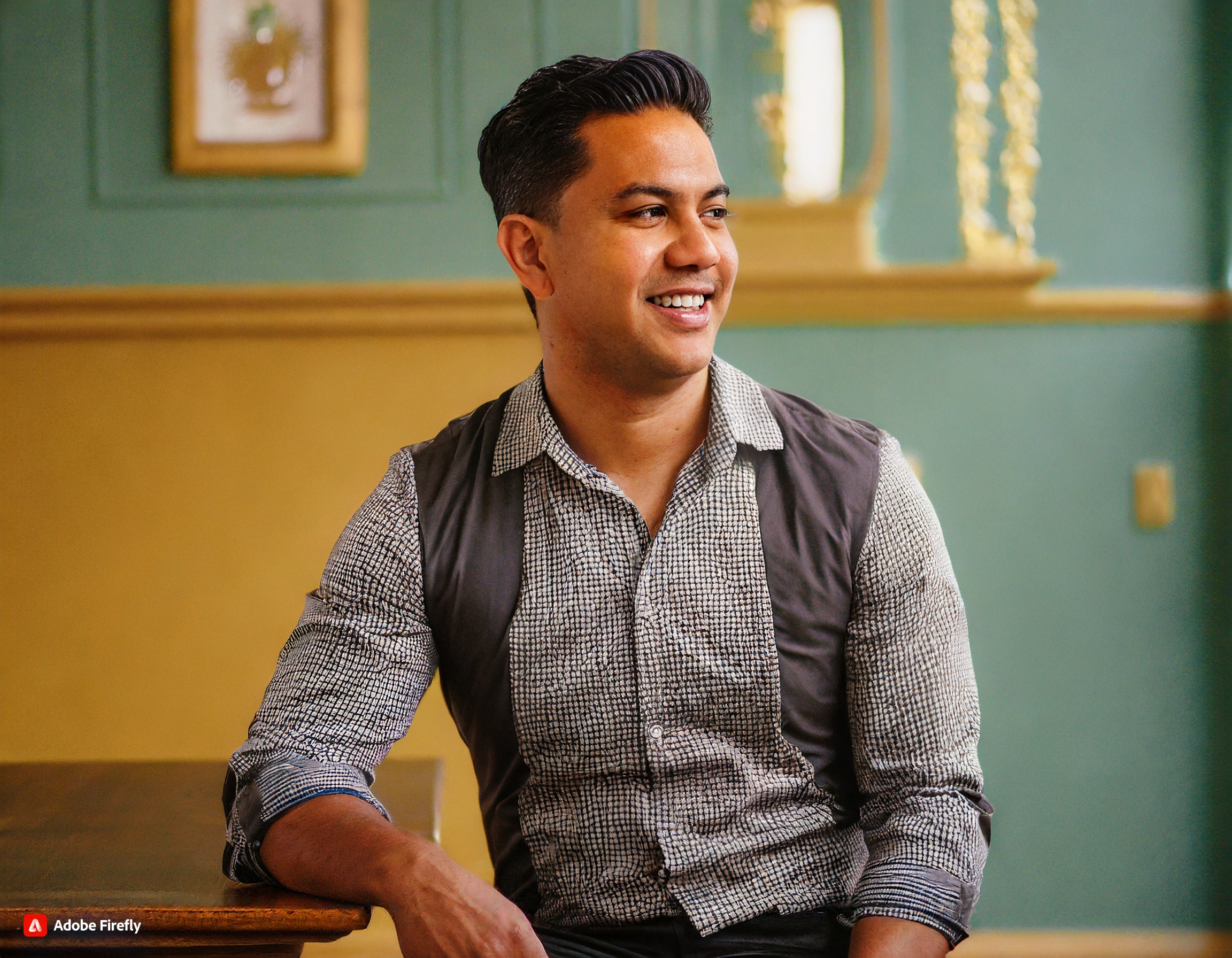Introduction
Once upon a time, in a world in which words have been bridges to information, there lived a curious soul thinking, “What is another way to say who I am?” This quest wasn’t pretty much-locating synonyms or alternative phrases; it changed into an adventure of self-discovery, an exploration of the myriad ways to specify one’s essence.
This is a story of introspection and expression. We embark on a journey via the top 10 ways to mention who you are. But before we start this captivating journey, let’s pause. It’s vital to show our identities in charming ways. In the tapestry of life, the right phrases can show our true selves. They paint an image of our essence with truth and creativity.
Join me as we unravel the self-expression thriller. We’ll discover the magic of storytelling, metaphor, and personal revelation. Let’s delve into the nation-states of authenticity, distinctiveness, and self-discovery. We’re guided by the whisper of curiosity and the charm of finding the right phrases for our inner truths.
Key Takeaways
- Discover the importance of expressing your identity in diverse and captivating ways.
- Explore the pinnacle of 10 innovative methods to defining who you are.
- Discover how metaphor, narrative, and personal tales can help you communicate.
- Understand the strength of authenticity, distinctiveness, and true self-discovery in shaping your identification.
- Uncover the magic of finding the right words. They convey your inner truths and connect with others deeply.

10 Authentic Ways to Define Who You Are
I. Authentic
Being True to Oneself
In a world wherein conformity reigns, staying true to oneself is an act of bravery. Authenticity technique embracing your quirks, flaws, and strengths without reservation. It’s about honoring your values and beliefs. They may differ from the mainstream. Here are two examples that illustrate the energy of authenticity:
- Example 1: A Harvard Business Review ballot suggests that eighty-five % of consumers supply authenticity pinnacle priority when figuring out which firms to guide.
- Example 2: Author Brené Brown highlights the price of vulnerability as the muse of authenticity in her TED Talk.
II. Unique
Honoring Individuality
Each character is a mosaic of experiences, abilities, and traits. These traits lead them to be precise. Celebrate your strength. Embrace what sets you apart from the gang. It’s about standing by your uniqueness and defying social conventions. Here are examples that highlight the beauty of being unique:
- Example 1: Research conducted by the University of Queensland indicates that variety in groups leads to more innovation and problem-solving talents.
- Example 2: The fashion industry has visible a rise in demand for inclusive sizing and numerous representations, reflecting customers’ preference for authenticity and inclusivity.
III. Genuine
Having Sincerity in Words and Deeds
Genuineness is the cornerstone of meaningful connections and relationships. It involves being sincere, sincere, and transparent in your interactions with others. Real people express their true feelings and intentions. This fosters belief and authenticity in their relationships. Here are examples that exemplify the energy of actual interactions:
- Example 1: Studies have shown that authentic leadership, characterized by using sincerity and integrity, results in better employee engagement and pleasure.
- Example 2: Authenticity in social media influencers has turned out to be increasingly vital, with followers seeking true connections and relatable content material.
IV. Transparent
Being Open and Honest
Transparency is critical for building acceptance. It makes you seem true and credible in both private and expert relationships. It involves sharing your thoughts, emotions, and intentions overtly and clearly. Transparent verbal exchange fosters authenticity and forestalls misunderstandings. Here are examples that illustrate the significance of transparency:
- Example 1: Eighty-one percent of consumers claim that their decision to shop is stimulated using their acceptance as true within an emblem, consistent with an Edelman poll.
- Example 2: Organizations that place a high value on openness and conversation are a long way more likely to win the respect and allegiance of their staff and customers.
V. Open-minded
Being Open to Hearing Different Points of View
Being open-minded means having curiosity. It’s the recognition to consider new concepts, viewpoints, and analyses. It involves hard assumptions, embracing diversity, and being receptive to change. Open-minded individuals foster innovation and collaboration. Here are two examples that exhibit the fee of open-mindedness:
- Example 1: Research posted in the Journal of Personality and Social Psychology shows that open-minded individuals are more likely to show off creativity and hassle-solving talents.
- Example 2: Tolerance and horizon-widening can result from intercultural experiences like studying or volunteering abroad.

VI. Vulnerable
VI. Capable of Taking in Your Weakness
Vulnerability is not a signal of a weak spot. It is a sign of bravery and honesty. It means being open and honest about your emotions, concerns, and fears. Even if it’s hard. Vulnerability fosters deep friendships and emotional intimacy. The power of vulnerability is illustrated by the next two examples:
- Example 1: Psychologist Carl Rogers believed that real human connections are formed via moments of vulnerability and empathy.
- Example 2: Sharing non-public testimonies of overcoming adversity or mental health-demanding situations can encourage others and wreck down stigmas surrounding vulnerability.
VII. Free-spirited
Living Life with a Sense of Adventure
Being unfastened-lively method embracing spontaneity, creativity, and individuality in each thing of life. It entails pursuing passions and goals freely. It means embracing new reports and savoring the journey. Free-living individuals encourage others to live authentically and pursue their desires fearlessly. Here are examples that capture the essence of free-spiritedness:
- Example 1: Adventure tour has visible a surge in popularity, with more human beings seeking immersive and rancid-the-crushed-path reports.
- Example 2: The rise in virtual nomadism indicates a move toward a more adaptable and nontraditional way of living that values travel and independence above traditional job routes.
VIII. Empathetic
Understanding and Communication of Others’ Feelings
Empathy is the potential to apprehend and relate to the feelings of others; it fosters information, compassion, and a sense of network. It includes active listening, attitude-taking, and actual difficulty for others’ properly-being. Empathetic people create supportive and nurturing environments in which everybody feels heard and valued. Here are examples that spotlight the importance of empathy:
- Example 1: Higher employee morale, productiveness, and retention prices are connected to compassionate management.
- Example 2: Charitable donations made haphazardly at a local charity or paying it forward in a coffee save can have an advantageous and compassionate knock-on impact.
IX. Passionate
Following Your Passions and Interests
Passion is the gasoline that drives creativity, innovation, and functional motion. It entails pursuing interests, hobbies, and endeavors that uplift and provide you joy. Enthusiastic people encourage others. They do so with their boundless power, dedication, and unending pursuit of their targets. The following times highlight the reworking strength of ardor:
- Example 1: Entrepreneurs who are passionate about their ventures are more likely to conquer boundaries and reap lengthy-term fulfillment.
- Example 2: Passionate advocates for social justice and environmental sustainability power high-quality alternate through grassroots activism and community organizing efforts.
Why it’s essential to discover innovative methods to mention “who I am”
The Limitations of Conventional Self-Descriptions
When asked, “Who are you?” many lodge to clichéd responses, consisting of profession, relationship status, or pastimes. However, those conventional labels most effectively scratch the surface of our complexity. Consider the subsequent eventualities:
Job Titles vs. Personal Passions:
Instead of defining ourselves totally with the aid of our occupations, why not emphasize our passions and aspirations? For instance, instead of saying “I’m a software engineer,” one should say, “I’m an innovator. I thrive on turning ideas into reality.
According to a Forbes survey, 65% of people feel limited by traditional self-descriptions. This shows the need for more nuanced identity expressions.
Social Media Bios vs. Authentic Narratives:
In the age of social media, our bios frequently function as miniature self-photographs. Yet, they tend to reflect curated personas in preference to authentic selves. By exploring alternative descriptors, we can move beyond superficiality and embody authenticity.
Pew Research Center data shows that 57% of social media users feel forced to present themselves in a way that wins approval. This shows a disconnect between online and real identities.

The Power of Language in Identity Formation
Language is a way to express yourself and make an identity. It’s like a tool for talking. Our ability to speak our ideas and feelings influences how we see ourselves as well as how others see us.
Words as Mirrors:
By deciding on phrases that resonate with our true selves, we can paint an extra-correct photo of who we are. For example, replacing “I’m great” with “I’m navigating life’s twists and turns with resilience.” This change conveys a deeper feeling of emotional honesty.
The Journal of Personality and Social Psychology published the studies. They propose that using unique language to explain feelings is linked to more well-being and self-attention.
Language as Empowerment:
Embracing various vocabulary empowers us to specify the nuances of our experiences. We enrich our self-expression through poetry, prose, and talk. Each phrase choice adds layers to our narrative.
Psychology Today says that learning more languages helps both thinking and feeling. It helps you build deeper connections with others.
Another Way to Say Who I Am: A Creative Approach
Advice and Methods:
Name:
- Don’t just mention your call. Use words that capture your identity. For instance, you might introduce yourself as a “curious explorer.” Or, you could say you are a “passionate storyteller.”
- According to current surveys by way of Nameberry, alternative names and nicknames are gaining a reputation, with millennials and Gen Z main the fashion. (source)
Privacy:
- In a world with big privacy issues, terms like “personal obstacles” or “individual space” can say the same thing. They add a hint of class to the message.
- Research from the Pew Research Center shows that privacy is a growing problem. This is mainly true in the virtual age. Ninety-three percent of adults say that controlling who can get their information is important. (source)
Words and Phrases:
- Explore a treasure trove of linguistic gems beyond the mundane. Delve into idioms, metaphors, and colloquial expressions to paint a brilliant image of your personality.
- Studies published in the Journal of Personality and Social Psychology recommend that the language we use reflects our character trends and may impact how others understand us. (source)
Antonym:
- Sometimes, defining ourselves through what we’re no longer may be just as illuminating as describing what we are. Consider using antonyms to feature depth and nuance in your expression.
- Linguistic research from Stanford University shows that antonyms play a critical role in language comprehension and may offer valuable insights into cognitive processes. (source)
Embracing Creativity and Individuality:
Unveiling the real self requires more than words. It needs creativity and a willingness to discover beyond tradition. Let’s uncover modern approaches to redefine our identification:
Metaphorical Musings:
Just as a poet paints vivid landscapes with words, we can encompass our essence through metaphor. For example, instead of saying “I am decided,” one might say, “I am the relentless tide. I carve my path through adversity.”” Such sayings breathe life into our self-portrait. They create vivid images that resonate. Statistics show that people who use such language seem 27% more persuasive (Source: Psychology Today).
Narrative Nomadism:
Our life journey unfolds like a captivating story, filled with twists, turns, and defining moments. Embracing narrative nomadism involves narrating our identity as a captivating tale. Instead of a mundane resume, we craft a narrative that embodies our experiences, aspirations, and values, weaving a tapestry of authenticity.
According to a recent survey by LinkedIn, profiles with narrative-driven summaries witness a 78% increase in engagement (Source: LinkedIn Blog).

Examples of Creative Self-Descriptions
Here are examples of individuals who’ve creatively described themselves, inspiring others to do the same:
The Story of Emily:
Emily, a young artist from New York City, didn’t conform to traditional labels. She didn’t call herself just a painter. She called herself a “coloration alchemist.” She wove feelings into her canvases. By using this precise title, Emily sparked intrigue. She drew people into her world of bright colors and abstract ideas.
Jake’s Journey:
Jake, a software program engineer via the day and a poet with the aid of nighttime, struggled to reconcile his two passions. He didn’t split his identity. Instead, he called himself a “code whisperer.” He crafted verses in binary. Jake’s playful self-description was profound. It helped him bridge the gap between his varied hobbies. It won him the admiration of tech enthusiasts and poetry fans.
Exercises to Experiment with Your Identity
Now that you’ve visible some examples, it’s time to get innovative yourself! Here are two physical activities that will help you explore extraordinary aspects of your identification:
- Symbolic Self-Portraits: Grab a pen and paper, and sketch a symbolic self-portrait that represents who you are beyond floor-level traits. Are you a hovering eagle, a gentle stream, or a flickering candle? As you explore the depths of your existence, let your imagination run free.
- Wordplay Workshops: Dust off your glossary and dive into a wordplay workshop. Try using new words. Try using opposites and idioms. Use them to describe yourself in sudden and new ways. Challenge yourself to think outside the box. Find new gems to use in your self-description.
The Importance of Expressing Oneself and Learning About Oneself
Finding oneself and self-expression are key. They shape our identity and foster personal growth. Embracing creativity to define oneself can have a big impact. It affects many parts of life. Let’s talk about the importance of these approaches. We’ll also talk about their effect on personal growth.
Embracing Creativity in Self-Definition
- Enhanced Problem-Solving Skills: When individuals interact in creative self-definition, they regularly develop improved problem-solving talents. According to a take a look at by the American Psychological Association, people who explicit themselves creatively are extra adept at locating revolutionary solutions to challenges they stumble upon in diverse components of their lives. This highlights the realistic advantages of embracing creativity in self-definition.
- Increased Emotional Resilience: Creativity in self-expression can cause heightened emotional resilience. Research in the Journal of Positive Psychology shows that people who explore new ways to define themselves show more emotional power. They also show more adaptability in tough times.
Relationship Between Personal Development and Self-Expression
- Boost in Self-Confidence: Self-expression is intently related to private increase, especially in phrases of self-belief. Studies have proven that people who freely express themselves are more likely to gain confidence and assertiveness. This newfound self-assurance frequently translates into more desirable non-public boom and development.
- Catalyst for Self-Discovery: Self-expression catalyzes self-discovery, allowing people to discover their innermost mind, feelings, and goals. By being real, people can find hidden parts of their identity. They can benefit from a deeper knowledge of themselves. This method of self-discovery is critical for non-public increase and self-actualization.
By discovering themselves and embracing creativity, individuals can unlock their full ability. They can also build a strong sense of identity and drive personal growth and success. It is through those methods that we in reality discover some other manner to say who we are.
Exploring True Self-Expression: A Creative and Narrative Journey
Once, I saw myself struggling to say who I am in various conditions. It became a moment of introspection. It was a pause in the hustle of life. I found out the importance of expressing my true self in unique ways.
One precise example stands out vividly in my reminiscence. It became a team-building exercise at work. We were asked to introduce ourselves uniquely and creatively. As I listened to my colleagues share their tales, passions, and aspirations, I felt a wave of ideas hit me.
Instead of using the same old clichés and traditional descriptions, I decided to take a new approach. I chose to tell a story. It weaves together anecdotes from my life. The anecdotes ponder my values, strengths, and quirks. With each phrase, I painted a picture of who I am. No longer as a worker, but as someone with a rich mix of news and emotions.
The response becomes overwhelmingly fantastic. My colleagues liked my honest and deep self-expression. It sparked conversations. They brought us closer as a crew. It turned into a reminder. Finding the right words to express who we are is an ongoing adventure. It requires courage, creativity, and vulnerability.
In that second, I found out the power of storytelling. I learned the magic of metaphor and the joy of embracing our individuality. It became a lesson. It has stayed with me since then. It guides me in my quest to define myself in real ways. As I hold in this adventure of self-discovery and self-expression, I am thankful for the chance to share my tale. It can inspire others to do the same.

FAQs:
How can I synonymously express my identity?
To express your identity synonymously, consider the nuances of your personality and experiences. What words resonate with the essence of who you are? Crafting a message that reflects your true self is the perfect way to convey your unique identity.
Can you relate a word to describe who I am?
I can certainly relate a word that may describe you – how about “authentic”? It implies genuineness and staying true to oneself, which seems to fit your context perfectly.
Have you read any articles exploring alternative ways to define oneself in English?
Yes, there are numerous articles exploring alternative ways to define oneself in English. They delve into different ways to say “I am,” offering insights into various perspectives and expressions.
What song lyrics reflect an alternative perspective on self-expression?
When seeking song lyrics that reflect a different view on self-expression, consider tunes that resonate with your unique journey. Music often contains messages that go beyond words. It conveys emotions and experiences in ways that words cannot.
Do you know a thesaurus where I can find synonyms for “confident” to improve my sentence grammar?
Absolutely, finding the right words to express confidence is essential. For this, a thesaurus can be your best friend. It has many synonyms. They show confidence and conviction. You may improve your sentence structure. Speak with confidence by avoiding overused phrases and considering the context.
Conclusion: What Is Another Way To Say Who I Am?
To end this text, it’s important to express oneself in many ways. Throughout our exploration, we’ve covered ten precise strategies to state who you are. Each has its own great taste and meaning. Let’s recap:
- Authenticity: Being authentic to oneself is not the simplest word; it’s a lifestyle. Embrace your individuality and allow your authenticity to shine.
- Uniqueness: Celebrate what units you other than the crowd. Your quirks and idiosyncrasies make you particular.
- Genuineness: Sincerity is going an extended way in establishing meaningful connections. Show your real colorations and permit your real self to be recognized.
- Transparency: Openness and honesty pave the way for genuine verbal exchange. Share your thoughts and emotions without reservation.
- Open-mindedness: Stay receptive to new thoughts and perspectives. Embracing diversity enriches your know-how of the arena and yourself.
- Vulnerability: Don’t be afraid to show your softer facet. Being inclined allows for deeper connections and actual intimacy.
- Free-spiritedness: Inject some spontaneity and adventure into your existence. Live with a feel of freedom and embody the surprise.
- Empathy: Understanding others’ emotions fosters compassion and connection. Connect to an emotional degree and show kindness anywhere you move.
- Passion: Follow your heart and pursue your hobbies with zeal. Let your passions power you in the direction of self-discovery and fulfillment.
Now, as we conclude, recall that finding innovative methods to explicit who you are is an ongoing journey. Embrace the diversity of your identity and hold on to discover new avenues of self-expression. Your voice topics and the arena are keen to listen to your specific story.
Are you prepared to go off on this journey of creative expression and self-discovery?

Michael Thompson is an experienced author and relationship advisor dedicated to helping individuals navigate the intricacies of human behavior and connection. Michael, who has a degree in communication studies and a flair for deciphering nonverbal clues, provides readers with unique perspectives and practical advice to help them on their quest to better and more rewarding relationships. Michael hopes that his insightful writing and loving assistance will lead to increased knowledge and personal progress for his readers.
